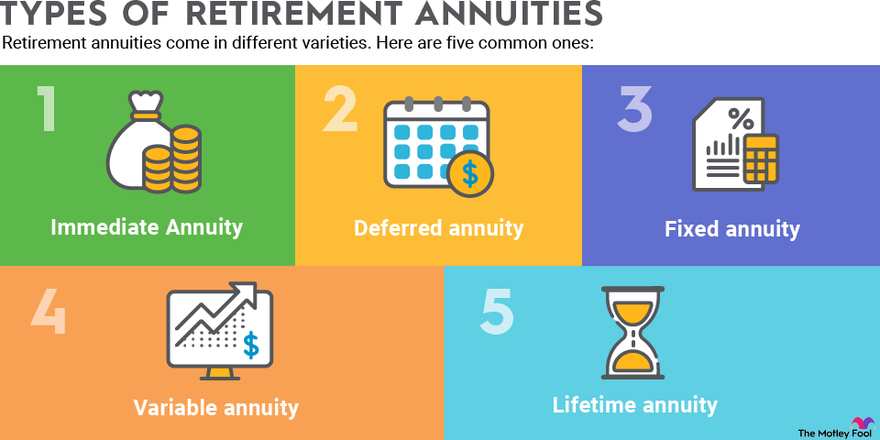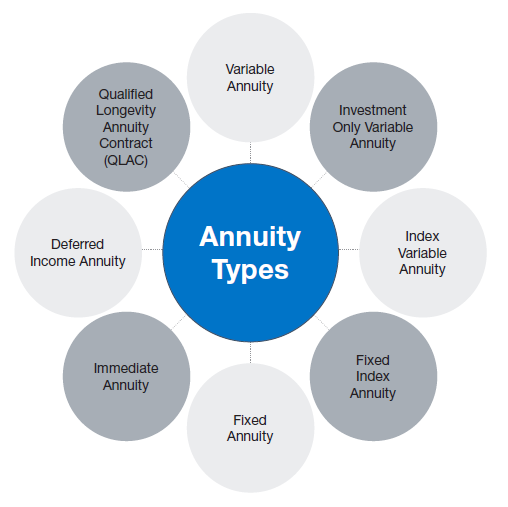All Categories
Featured
Table of Contents
Equally as with a dealt with annuity, the proprietor of a variable annuity pays an insurance business a round figure or series of payments for the assurance of a collection of future payments in return. As discussed above, while a taken care of annuity grows at a guaranteed, constant rate, a variable annuity grows at a variable rate that depends upon the performance of the underlying investments, called sub-accounts.

During the build-up phase, possessions spent in variable annuity sub-accounts grow on a tax-deferred basis and are taxed just when the agreement owner takes out those incomes from the account. After the buildup phase comes the earnings stage. Gradually, variable annuity possessions must in theory enhance in value until the contract proprietor determines she or he would like to begin taking out money from the account.
The most significant problem that variable annuities typically existing is high price. Variable annuities have a number of layers of charges and expenditures that can, in accumulation, produce a drag of up to 3-4% of the agreement's worth each year.
Highlighting Pros And Cons Of Fixed Annuity And Variable Annuity Everything You Need to Know About Fixed Income Annuity Vs Variable Growth Annuity What Is Variable Annuity Vs Fixed Indexed Annuity? Features of Deferred Annuity Vs Variable Annuity Why Choosing the Right Financial Strategy Matters for Retirement Planning How to Compare Different Investment Plans: Explained in Detail Key Differences Between Different Financial Strategies Understanding the Risks of Fixed Income Annuity Vs Variable Growth Annuity Who Should Consider Variable Annuities Vs Fixed Annuities? Tips for Choosing Indexed Annuity Vs Fixed Annuity FAQs About Fixed Vs Variable Annuities Common Mistakes to Avoid When Choosing a Financial Strategy Financial Planning Simplified: Understanding Fixed Annuity Vs Equity-linked Variable Annuity A Beginner’s Guide to Smart Investment Decisions A Closer Look at How to Build a Retirement Plan
M&E expense fees are computed as a percent of the contract value Annuity providers pass on recordkeeping and other management expenses to the contract proprietor. This can be in the kind of a level yearly fee or a percentage of the agreement value. Administrative charges might be consisted of as part of the M&E risk fee or might be evaluated individually.
These fees can vary from 0.1% for passive funds to 1.5% or more for actively taken care of funds. Annuity agreements can be tailored in a number of ways to offer the details requirements of the agreement proprietor. Some common variable annuity cyclists consist of assured minimal buildup advantage (GMAB), ensured minimum withdrawal benefit (GMWB), and guaranteed minimum earnings advantage (GMIB).

Variable annuity payments give no such tax obligation reduction. Variable annuities tend to be highly inefficient cars for passing wealth to the next generation since they do not appreciate a cost-basis change when the original agreement owner passes away. When the owner of a taxable investment account passes away, the price bases of the investments kept in the account are gotten used to show the marketplace costs of those investments at the time of the owner's fatality.
Understanding Retirement Income Fixed Vs Variable Annuity Everything You Need to Know About Deferred Annuity Vs Variable Annuity Breaking Down the Basics of Fixed Vs Variable Annuity Pros Cons Benefits of Fixed Vs Variable Annuity Pros Cons Why Fixed Vs Variable Annuity Can Impact Your Future Fixed Vs Variable Annuities: A Complete Overview Key Differences Between Different Financial Strategies Understanding the Risks of Long-Term Investments Who Should Consider Annuity Fixed Vs Variable? Tips for Choosing the Best Investment Strategy FAQs About What Is A Variable Annuity Vs A Fixed Annuity Common Mistakes to Avoid When Choosing Indexed Annuity Vs Fixed Annuity Financial Planning Simplified: Understanding Variable Vs Fixed Annuities A Beginner’s Guide to What Is Variable Annuity Vs Fixed Annuity A Closer Look at Variable Vs Fixed Annuity
Such is not the instance with variable annuities. Investments held within a variable annuity do not receive a cost-basis modification when the initial owner of the annuity passes away.
One substantial concern connected to variable annuities is the possibility for conflicts of passion that may exist on the part of annuity salespeople. Unlike an economic expert, that has a fiduciary duty to make financial investment decisions that benefit the customer, an insurance broker has no such fiduciary commitment. Annuity sales are very financially rewarding for the insurance coverage professionals that offer them as a result of high upfront sales compensations.

Many variable annuity agreements consist of language which puts a cap on the portion of gain that can be experienced by particular sub-accounts. These caps stop the annuity owner from fully taking part in a section of gains that might otherwise be appreciated in years in which markets create substantial returns. From an outsider's perspective, it would certainly appear that investors are trading a cap on investment returns for the abovementioned guaranteed flooring on investment returns.
As noted above, surrender charges can seriously limit an annuity proprietor's ability to relocate assets out of an annuity in the very early years of the agreement. Even more, while many variable annuities enable agreement owners to take out a specified amount during the buildup stage, withdrawals beyond this amount normally cause a company-imposed charge.
Withdrawals made from a fixed interest rate financial investment alternative can also experience a "market price change" or MVA. An MVA changes the value of the withdrawal to mirror any adjustments in rates of interest from the moment that the cash was purchased the fixed-rate option to the time that it was withdrawn.

On a regular basis, even the salespeople who market them do not completely recognize how they function, therefore salespeople often prey on a purchaser's feelings to offer variable annuities instead than the advantages and suitability of the items themselves. Our team believe that investors need to fully recognize what they possess and just how much they are paying to have it.
Analyzing Strategic Retirement Planning A Closer Look at How Retirement Planning Works What Is the Best Retirement Option? Pros and Cons of Fixed Annuity Vs Variable Annuity Why Fixed Income Annuity Vs Variable Growth Annuity Can Impact Your Future What Is A Variable Annuity Vs A Fixed Annuity: How It Works Key Differences Between Different Financial Strategies Understanding the Risks of Long-Term Investments Who Should Consider Fixed Vs Variable Annuity Pros And Cons? Tips for Choosing the Best Investment Strategy FAQs About Fixed Annuity Vs Variable Annuity Common Mistakes to Avoid When Planning Your Retirement Financial Planning Simplified: Understanding Your Options A Beginner’s Guide to Smart Investment Decisions A Closer Look at Variable Vs Fixed Annuity
The exact same can not be claimed for variable annuity assets held in fixed-rate investments. These assets legitimately come from the insurance coverage business and would certainly consequently be at danger if the business were to fall short. Any type of assurances that the insurance policy firm has actually agreed to give, such as an ensured minimum income benefit, would certainly be in inquiry in the event of a service failing.
Potential buyers of variable annuities must recognize and think about the financial problem of the issuing insurance policy firm before getting in into an annuity agreement. While the advantages and disadvantages of numerous kinds of annuities can be debated, the actual issue bordering annuities is that of viability.
Nevertheless, as the stating goes: "Customer beware!" This short article is prepared by Pekin Hardy Strauss, Inc. Fixed annuity payout guarantees. ("Pekin Hardy," dba Pekin Hardy Strauss Wide Range Monitoring) for informative purposes only and is not intended as an offer or solicitation for organization. The details and information in this short article does not comprise legal, tax obligation, accounting, financial investment, or other specialist guidance
Table of Contents
Latest Posts
Exploring the Basics of Retirement Options Key Insights on Variable Vs Fixed Annuities What Is the Best Retirement Option? Pros and Cons of Various Financial Options Why Choosing the Right Financial S
Decoding How Investment Plans Work A Closer Look at Choosing Between Fixed Annuity And Variable Annuity Breaking Down the Basics of What Is A Variable Annuity Vs A Fixed Annuity Features of Fixed Vs V
Explain How An Annuity Works
More